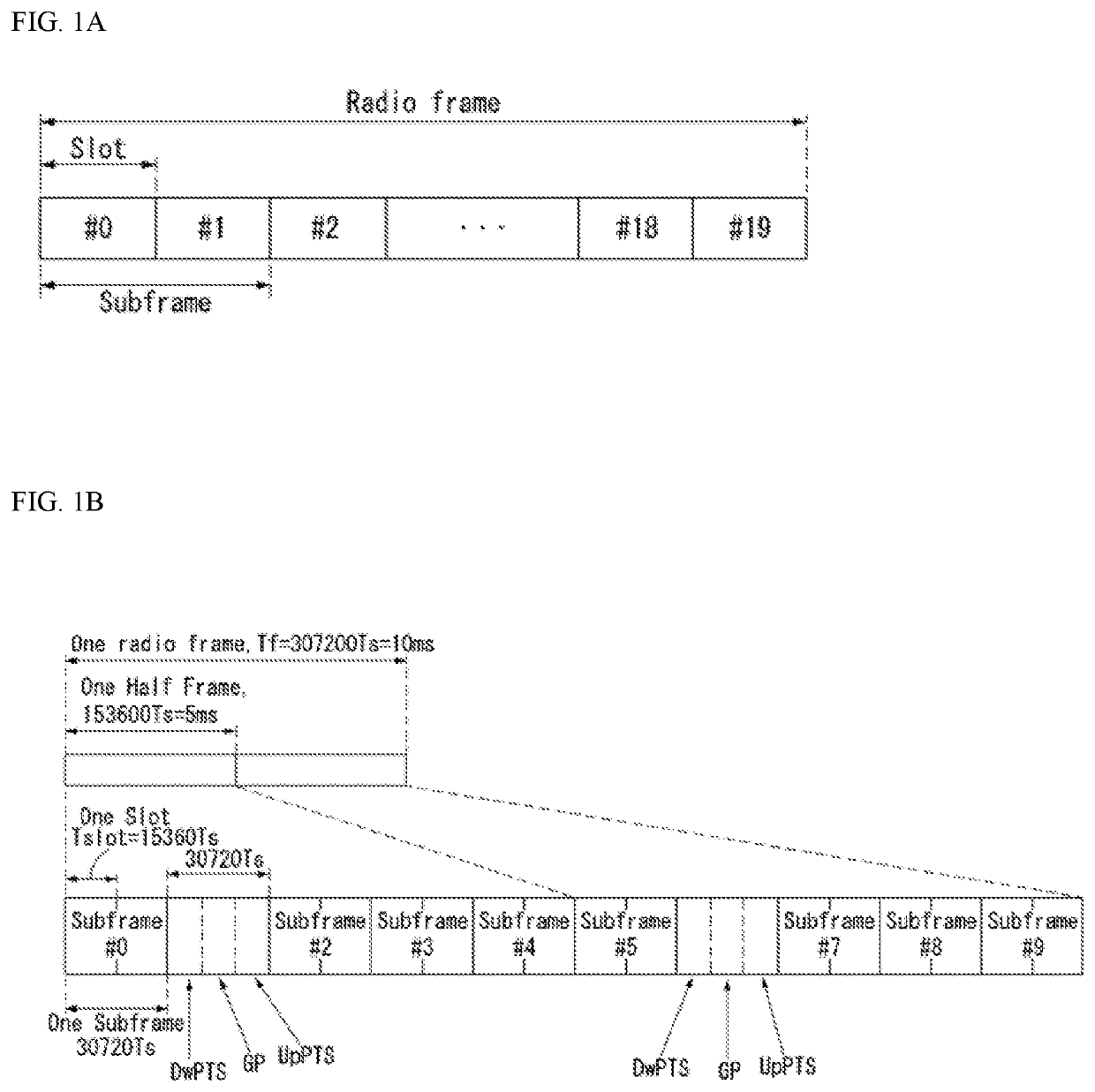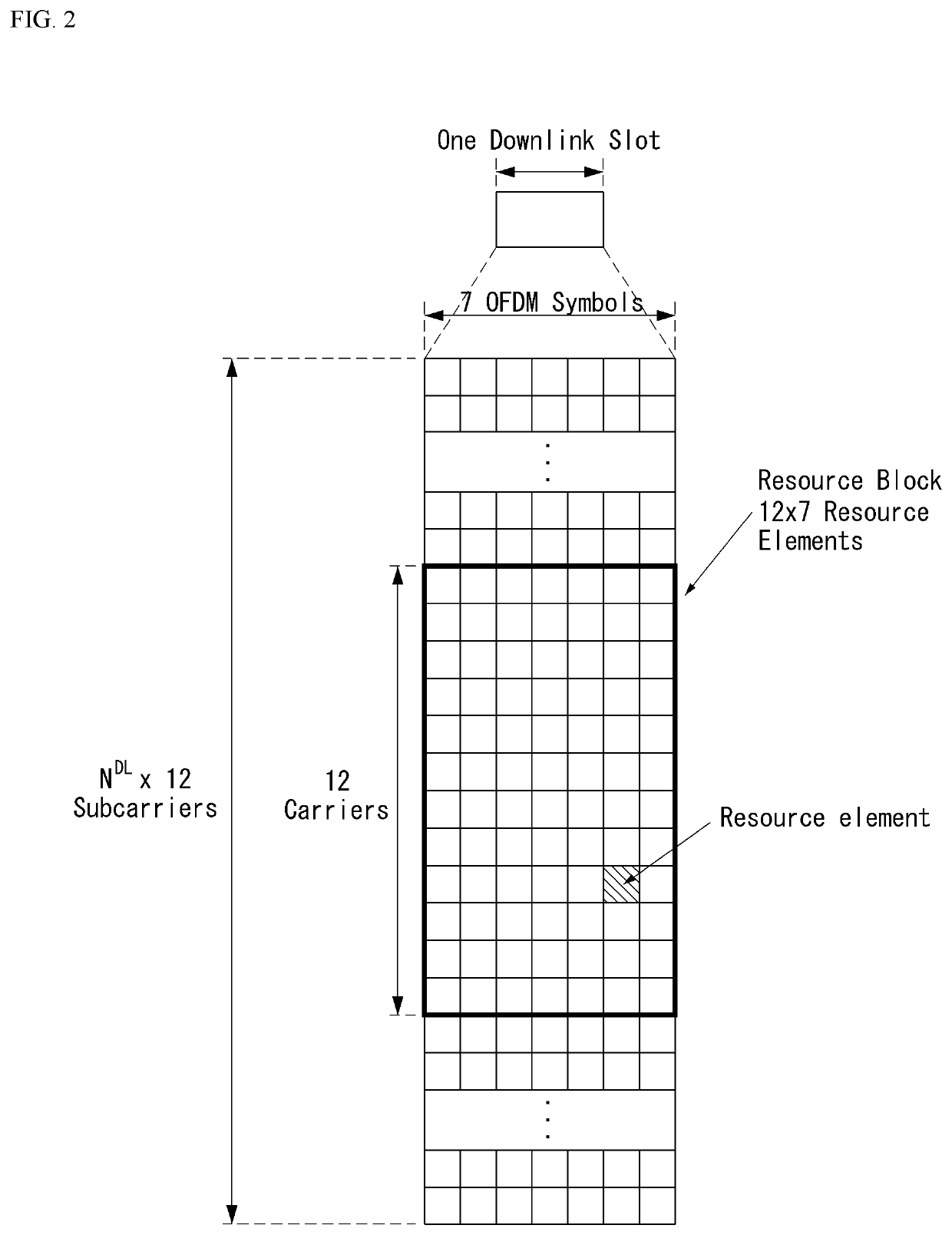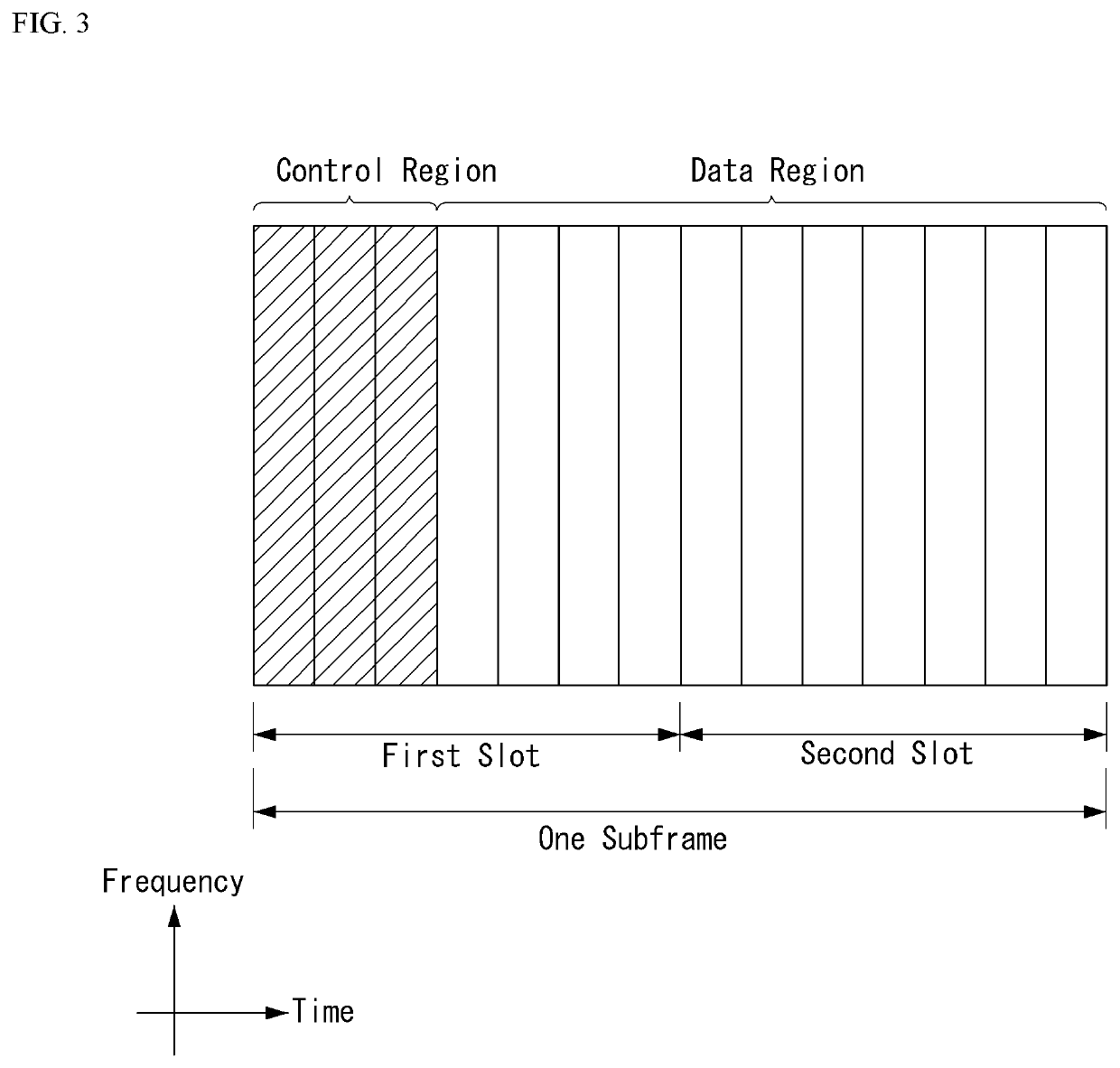Method for transmitting and receiving physical downlink shared channel in wireless communication system and device supporting the same
a wireless communication system and shared channel technology, applied in the field of wireless communication system, can solve problems such as resource shortfall, and achieve the effect of improving pdsch transmission and reception reliability
- Summary
- Abstract
- Description
- Claims
- Application Information
AI Technical Summary
Benefits of technology
Problems solved by technology
Method used
Image
Examples
first embodiment
[0270]A method for reinterpreting an existing field so that information related to physical downlink shared channel (PDSCH) repetition is indicated is described.
[0271]To improve transmission reliability of the PDSCH, a method (i.e., blind / HARQ-less PDSCH repetition) may be considered to repeatedly transmit a PDSCH over a plurality of transmission time intervals (TTIs) for the same transport block (TB) without transmission of HARQ (Hybrid Automatic Repeat and request)-ACK (Acknowledgement). The repetition of the same TB may be scheduled by indicating the number of repetitions in downlink control information (DCI). Alternatively, the repetition of the same TB may be scheduled by configuring the number of repetitions via a higher layer signal. Alternatively, the repetition of the same TB may be scheduled by using the same HARQ process ID and / or a non-toggled new data indicator (NDI) for the TTI (within successive or specific time duration).
[0272]A transmission performance of the PDSCH ...
second embodiment
[0279]A method for interpreting CFI according to whether or not an operation related to PDSCH repetition is enabled is described.
[0280]Reliability of URLLC transmission and reception may be affected by reliability of a control channel and, particularly, may be greatly affected by a physical control format indicator channel (PCFICH) decoding performance. If a UE erroneously decodes a PCFICH and erroneously recognizes a control channel region (e.g., the number of symbols occupied by a control channel), it may adversely affect the reliability of the control channel, and (in case of a subslot operation) the UE may understand a downlink (DL) TTI boundary differently from a base station and perform the decoding. To prevent it, a method for configuring information about the control channel region to the UE via a higher layer signal is considered.
[0281]Accordingly, the UE may determine whether to follow a control format indicator (CFI) value based on the PCFICH or a CFI value configured via...
third embodiment
[0293]A method for determining PUCCH resources for transmitting HARQ-ACK is described.
[0294]If information about whether there is PDSCH repetition and / or the number of PDSCH repetitions, or inter-TTI hopping related information is indicated through reinterpretation of an ARI field of the existing DCI format, ambiguity may occur when the UE determines a HARQ-ACK resource.
[0295]A rule may be defined, promised, and / or configured as in the following methods in order to prevent the ambiguity.
[0296]The following methods described in the third embodiment are merely distinguished for convenience of explanation, and thus it is obvious that configuration of any method can be replaced by or combined with configurations of other methods.
[0297](Method 1)
[0298]If information about whether there is PDSCH repetition and / or the number of PDSCH repetitions, or inter-TTI hopping related information is indicated through reinterpretation of an ARI field of the existing DCI format, a rule may be defined,...
PUM
 Login to View More
Login to View More Abstract
Description
Claims
Application Information
 Login to View More
Login to View More - R&D
- Intellectual Property
- Life Sciences
- Materials
- Tech Scout
- Unparalleled Data Quality
- Higher Quality Content
- 60% Fewer Hallucinations
Browse by: Latest US Patents, China's latest patents, Technical Efficacy Thesaurus, Application Domain, Technology Topic, Popular Technical Reports.
© 2025 PatSnap. All rights reserved.Legal|Privacy policy|Modern Slavery Act Transparency Statement|Sitemap|About US| Contact US: help@patsnap.com



